Armstrong Whitworth Whitley Mk V (P5050 - code YG-M)
In the sea, off Ushant Island
(contributors : Daniel Dahiot, Frédéric Hénoff, ECPAD)

Armstrong Whitworth Whitley Mk VII - Squadron 502
Photo source inconnue
Crew (502 Squadron RAF)
all crew members were captured
- Squadron Leader N.S.F. DAVIE, R.A.F. (service number 90373)
(Stalag Luft 3 Sagan & Belaria, P.O.W. #1416)
- Sergeant BERT CLARK GILLESPIE, R.A.A.F. (service number 402117)
(Stalag Luft 6 Heydekrug, P.O.W. #24766)
- Sergeant M.F. SIKAL, R.C.A.F. (service number R61024)
(Stalag Luft 6 Heydekrug, P.O.W. #24747)
- Sergeant T.R CALDER, R.A.F. (service number 627441)
(Stalag Luft 3 Sagan & Belaria, P.O.W. #24751)
- Sergeant G.S. HARRIS, R.A.F. (service number 1166732)
(Stalag Luft 6 Heydekrug, P.O.W. #240)
- Sergeant J.F. BARNES, R.A.F. (service number 923213)
(Stalag Luft 3K, P.O.W. #24749)
THE STORY
The possibility that the Scharnhorst, the Gneisenau and the Prinz Eugen navigate at night for a day passage in the Strait of Pas-de-Calais had been considered and, to provide an adequate response if this happened, the Coastal Command had put in place three reconnaissance patrols which were carried out during the hours of darkness in the western and central areas of the English Channel. The first was called "Stopper" and was located off the entrance to the gully of Brest; another in the center was called "Line SE" and was located between Ouessant and the Bréhat island, and another in the east, called "Habo", was located between Le Havre and Boulogne. All these flights were carried out by Lockheed Hudsons or Armstrong Whitworth Whitleys equipped with an ASV radar (Air-to-Surface Vessel).
The first Coastal Command Squadrons to use Armstrong Whitworth Whitley Vs were No.502 (GR) and No.612 (GR), from 1940 and 1941 until the arrival of Armstrong Whitworth Whitley VII in 1942. Armstrong Whitworth Whitley GR Mark VII, GR for General Reconnaissance, had additional fuel tanks in the bomb bay and the fuselage, which increased its range to 2,300 miles, an ideal autonomy for its use within the Coastal Command. The aircraft was also fitted with air-to-surface radar (ASV), which involved a row of four dorsal radar masts and the addition of a sixth crew member.
In the early hours of the morning of February 4, 1942, the Coastal Command dispatched a patrol of two Whitleys from No.502 Squadron. One of them, flown by Flight Sergeant POPE (the Whitley YG-G), came into contact with a German convoy consisting of four vessels north of Batz island and was welcomed by heavy fire from Flak with several shots reaching the aircraft but without injuring any of the crew members. The aircraft returned to its base and landed at St. Eval at 9:50 am. The second Whitley (P5050, YG-M), sent to the Brest sector, was flown by Squadron Leader DAVIE. The aircraft was intercepted by two Messerschmitt Bf 109s from I./JG 2. Feldwebel Heinz-Helmut BAUDACH started to attack at 9:55 a.m. and the Whitley's tail gunner responded with precise fire which damaged the Messerschmitt (BAUDACH made a belly landing back to Brest Guipavas - see link to Me Bf 109 E-7 WNr 6496). DAVIE, whose aircraft was damaged, and with Sgt HARRIS seriously injured, attempted a forced landing on the island of Ouessant, but his aircraft's landing gear collapsed and he had to land on the belly (at a place called Keranchas). The crew evacuated the aircraft and tried to reach the north coast of the island, where they were quickly captured.
Here under 8 photos probably taken by a German soldier just after the crash of the Whitley YG-M. These photos, property of ECPAD, are very emotional ; we can indeed guess the level of stress that the crew must have experienced when, after having managed a crash very early in the morning in the middle of nowhere, certainly still in shock, had to surrender to the enemy. Especially since at least one crew member (probably Sergeant HARRIS) was injured as seen in one of the photos.
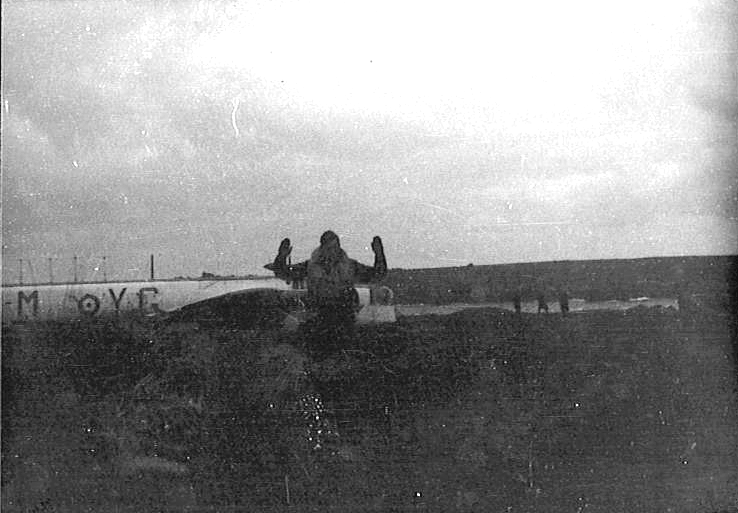
One of the crew members surrendered to the Germans shortly after the crash. We can see very clearly, on the fuselage of the plane coded YG-M
the antennas of the ASV radar system (“Air to Surface Vessel” radar).
Photo © Unknown photographer/ECPAD/Défense - référence DAM 831 L01
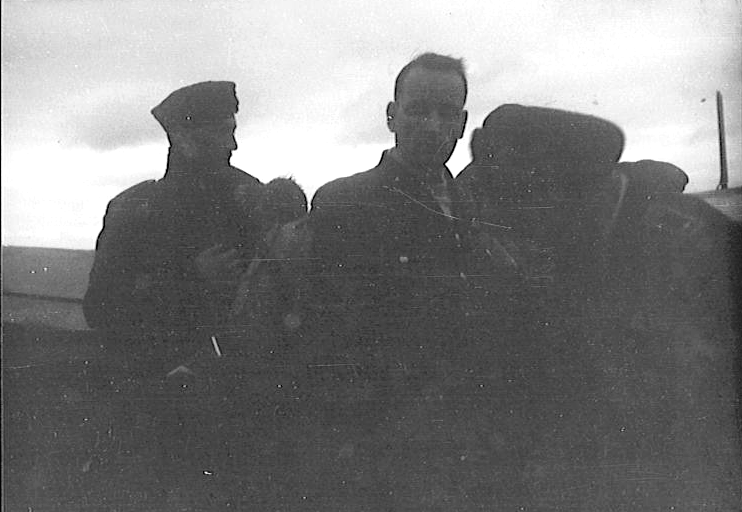
Perhaps this same crew member, just captured, searched by a German soldier.
Photo © Unknown photographer/ECPAD/Défense - référence DAM 831 L02
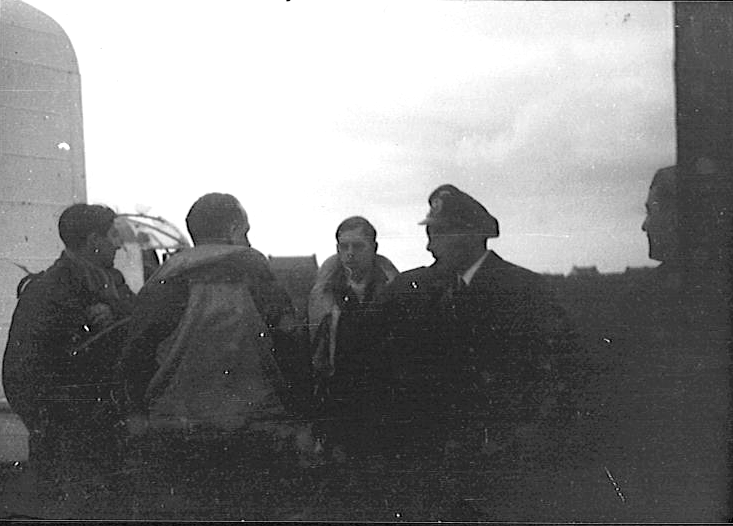
First exchanges between several crew members and the German soldiers.
Photo © Unknown photographer/ECPAD/Défense - référence DAM 831 L03

Difficult photo showing a member of the Whitley crew, visibly injured in the abdomen, his head supported by a comrade
who probably asks the Germans for assistance. Note the fur-lined flight boot, typical of RAF bomber crews.
Photo © Unknown photographer/ECPAD/Défense - référence DAM 831 L04

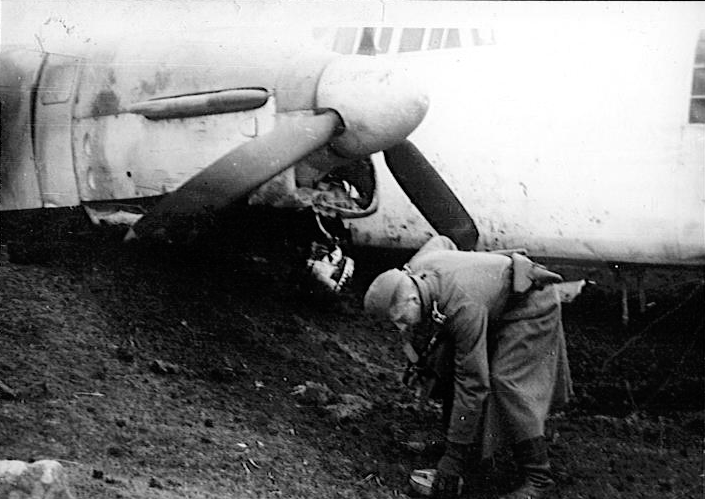

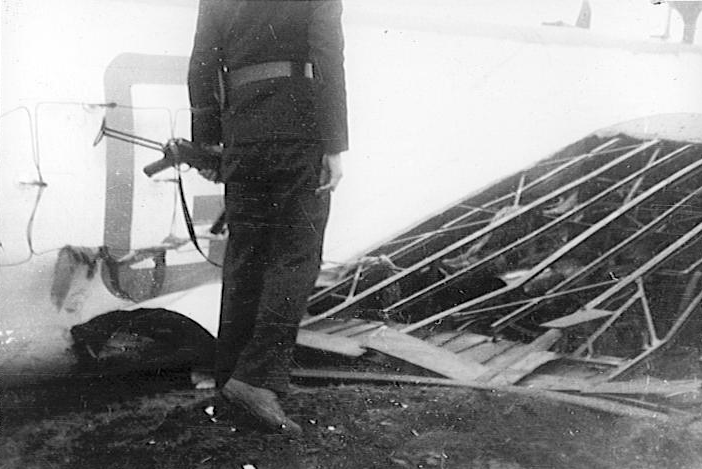
4 views of the Whitley YG-M after the crash. We note the good condition of the propellers which visibly did not suffer during contact with the ground.
Photo © Unknown photographer/ECPAD/Défense - référence DAM 831 L05/L06/L07/L08
APPENDICES
Extract from document AIR-27-1959-3 and AIR-27-1959-4 (Operational Record Book no 502 Squadron RAF) for the date of 4th July, 1942
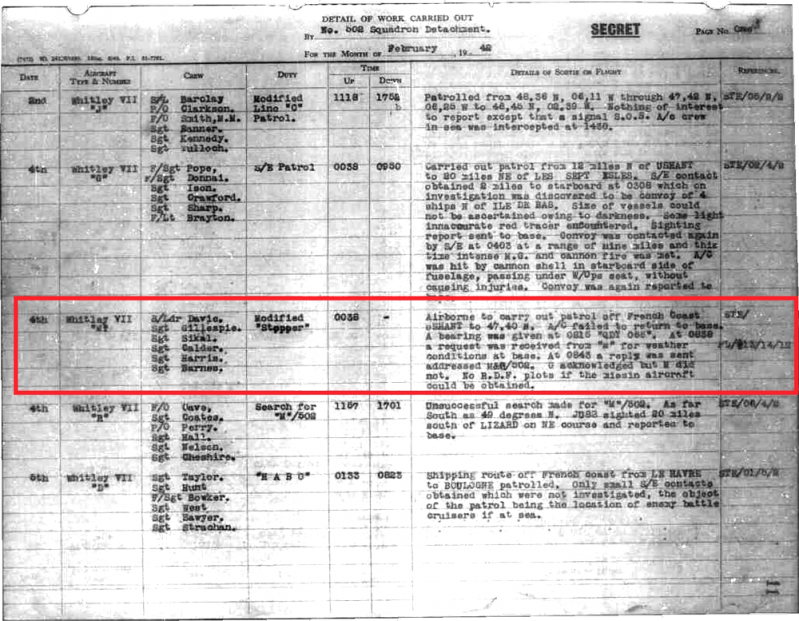
This document specifies that the Whitley took off at 00:38 for a modified "Stopper" patrol. He was sent on a patrol off the coast French at the level
of Ushant. The aircraft failed to return to base. A bearing was given at 8:15 a.m. At 8:38 a.m., a request from Davie's plane
("M", ie the 3rd letter of the aircraft code) was received regarding the weather conditions at the base. The reply was sent at 8:43 a.m.
Pope's plane ("G") acknowledged but Davie's ("M") did not.

This document specifies that Davie's aircraft took off from the RAF base at St-Eval and that it failed to return.
Information was received on February 26, 1942 from the Committee of the International Red Cross which specified that all
the crew members were prisoners of war. Sergeant Harris was wounded but not the other crew members.
Ajouter un commentaire